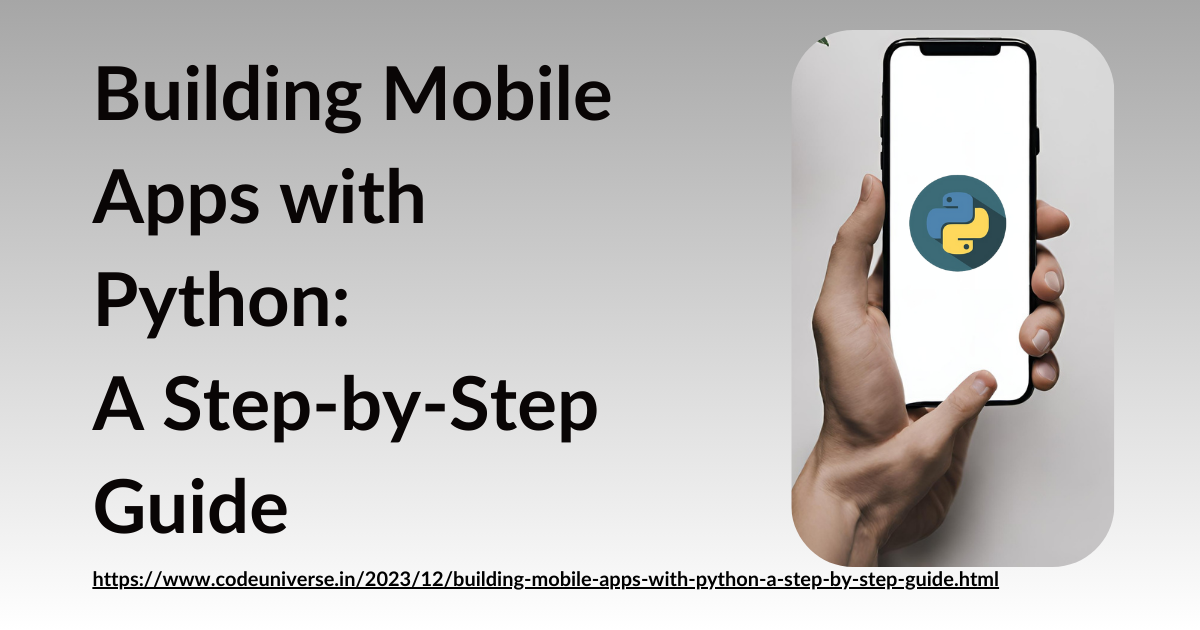Learn Python for Mobile App Development with a Complete Step-by-Step Guide
Python stands out as a fantastic choice for creating mobile applications, thanks to its flexibility and the strength of its modules. Developers appreciate the simplicity it brings to the table, while Python libraries offer reusable code, making the application development process smoother and faster. Whether you're crafting a simple utility program or a complex game, Python grants you the freedom and resources to bring your ideas to fruition. The clarity and readability of Python, coupled with a range of tools and frameworks, further enhance the mobile app development journey. Delve into a step-by-step tutorial below to unlock the full potential of Python in creating mobile applications.
1. Start by installing Python on your machine. Ensure that Python is set up and ready before you proceed. Alternatively, you can download it from the official Python website. Choose the version that aligns with your requirements.
2. Choose a Python framework for developing mobile applications.A variety of choices exists, with standouts such as Kivy, BeeWare, and SL4A (Scripting Layer for Android). Kivy, an open-source Python library, makes it easy to develop programs quickly with advanced user interfaces, including multi-touch functionality. BeeWare is a comprehensive toolkit for crafting user interfaces, equipped with tools and libraries. SL4A, or Scripting Layer for Android, provides a versatile scripting environment, making it an ideal choice for enhancing the functionality and interactivity of your Python-based mobile app. With BeeWare, you can seamlessly develop your Python app and deploy it across a spectrum of operating systems, encompassing iOS, Android, Windows, MacOS, Linux, Web, and tvOS.
3. After selecting your framework, it's crucial to set up your development environment. This typically involves installing necessary software packages and configuring configuration files. The specific procedure can be influenced by your choice of framework.
Let's consider setting up the development environment for a Python mobile app using the Kivy framework.
- Install Python:
Ensure Python is installed on your machine. You can download the latest version from the official Python website.
- Install Kivy:
Open a terminal or command prompt and run the following command to install Kivy using pip:
pip install kivy- Create a Virtual Environment (Optional but recommended):
It's good practice to create a virtual environment for your project to manage dependencies. Run the following commands:
python -m venv myenv
source myenv/bin/activate # On Windows, use 'myenv\Scripts\activate'- Initialize Kivy App:
Create a new Python file (e.g., main.py) and initialize a basic Kivy app. For example:
from kivy.app import App
from kivy.uix.button import Button
class MyApp(App):
def build(self):
return Button(text='Hello Kivy!')
if __name__ == '__main__':
MyApp().run()- Run the App:
Execute your Python script to run the Kivy app. You should see a simple window with a button displaying "Hello Kivy!"
This example outlines the general steps for setting up a development environment using the Kivy framework. Remember that specific steps may vary based on the chosen framework and your operating system. Always refer to the documentation of the selected framework for detailed and accurate instructions.
4. With your environment set up, it's time to delve into app development. With a prepared environment, leverage the syntax and conventions of your chosen framework to craft your app. This involves writing Python code, designing your user interface, and implementing any necessary features to complete your app.
5. Concurrently, assess your app extensively through testing to ensure all functionalities work as intended and to identify and address any bugs or issues. Once you're satisfied with the tested app, proceed to the deployment. The specific procedure for deployment will vary based on the framework you choose.
In conclusion, the journey from setting up your Python environment to deploying a fully tested app is a rewarding endeavor. With the right framework, careful coding, and thorough testing, you unlock the potential to bring your mobile app vision to reality, making Python an ideal companion for developers.






